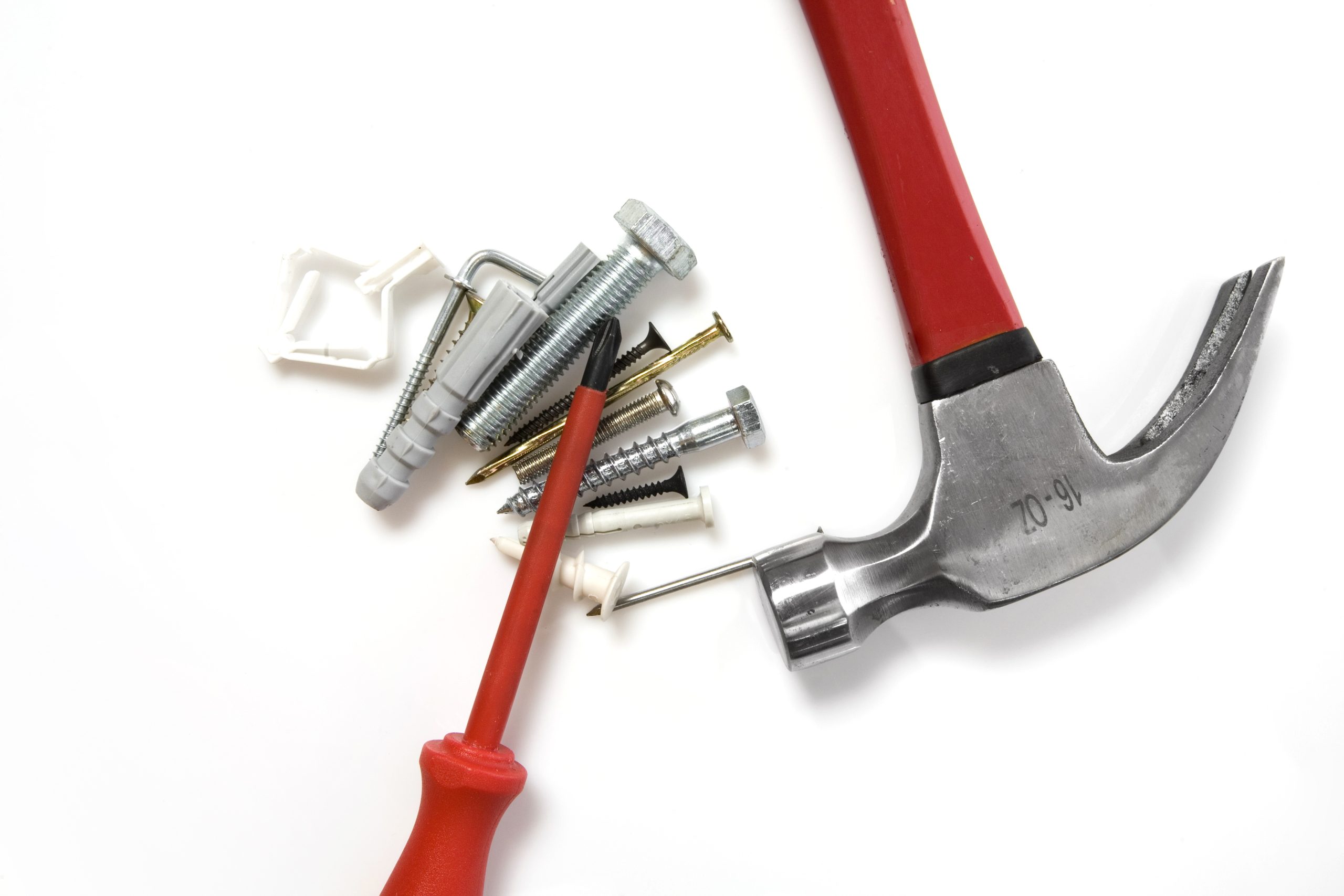Fixing up your home on your own can be challenging but rewarding. But it’s frustrating when you embark on a home-improvement project only to discover you don’t have the right tools for the job. Check this list of 10 useful items to see if you’ve got everything necessary for your next project.

Tape measure. Every do-it-yourselfer needs a tape measure (and a pencil and paper to take notes of your measurements). Use it to plot out where you’ll put new furniture, to determine the height of your new bathroom cabinets and to see how much carpeting or tiling you need to buy.
Flathead screwdriver. A flathead screwdriver is useful not only for securing screws in new shelving, it can also be used to smooth grout between tiles and caulking on window seals. Plus, it’s a quick solution for anything that needs gentle prying — like the lid of a paint can.
Phillips screwdriver. Unlike other tools on this list, the Phillips screwdriver has only one use: fastening or loosening Phillips-head screws. Have an assortment of head-widths available in case a project requires more than one size.
Plumber’s tape. Especially if you’re planning to embark on any bathroom improvements, this thin, stretchable film is an inexpensive must-buy. Wrapping the tape around the threads of a pipe-fitting ensures a watertight seal when the pipe is screwed into place. It can also be a temporary fix to shore up threads on bolts or screws that have lost some traction. This tape is also often erroneously called “Teflon tape,” though the word “Teflon” is a registered trademark of DuPont, which does not manufacture plumber’s tape.
Scraper. You can get plastic or metal scrapers in various sizes, but the most useful is a standard “putty knife.” Use it to scrape off old wallpaper and shuck flaking paint or varnish layers away from wooden surfaces to prepare for sanding.
Adjustable wrench. Remove or tighten bolts by adjusting the jaw around the head of the bolt and turning. (You may want to use locking pliers to keep the nut on the other side in place). You may also buy a set of wrenches if you’ll need to use them regularly, but for occasional projects this tool is likely all you’ll need for your bolts.
Locking pliers (also called Vise-Grips). Do things keep slipping from your grasp? Twist the knob on the end of the handle to adjust, and use this tool to securely hold the piping, washers, wood, or anything else that needs to stay in place.
Utility knife. A sharp knife with a retractable blade for safety is an important tool for many tasks. With it, you can cut out old caulking, open boxes of building materials and score drywall.
Hammer. Probably the world’s oldest tool, hammers continue to be essential. Use a hammer to hang pictures, build solid wooden structures and pry out old nails.
Level. Lastly, one of the most difficult tasks for an amateur carpenter or plumber is making sure fittings and surfaces are straight and level. Get in the habit of checking, and double-checking, that you’ve got clean lines before you install anything that you can’t easily uninstall.
Once you’ve assembled your tool kit, you’ll need somewhere to keep it. If you’re intent on becoming a serious handyperson, invest in a purpose-made toolbox. If you’re only planning on using your tools for a small project or other one-offs, a plastic utility box or even a large shoe box works just as well. Keep a few small plastic containers with lids — yogurt and instant coffee containers for instance — for temporary storage of washers, bolts and other bits and pieces that are easy to lose when you’re in the middle of a project.
About the Author: Sandy Skoville is an avid DIY-er and grew up helping her parents with their home-improvement projects. She’s working on a how-to book for at-home moms.

